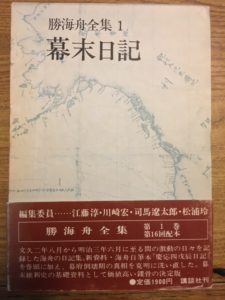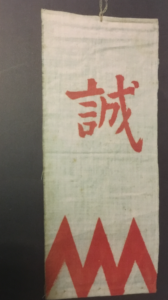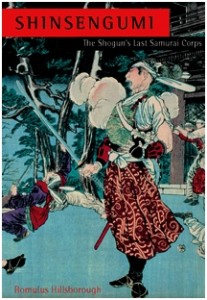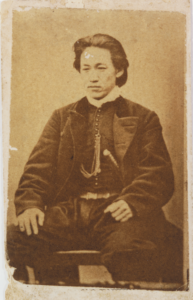
In writing Bakumatsu-Meiji Restoration history, Katsu Kaishu’s journal of the era is one of my most important sources. This applies to the Shinsengumi as well. For while Kaishu did not have much direct encounter with the Shinsengumi leaders, including Kondo Isami and Hijikata Toshizo, he documented the political landscape of the era to such an extent, and he captured its cultural and social essence so succinctly, that I find his journal indispensable in writing my in-depth history of the Shinsengumi.
[The above is a photo of my personal copy of Bakumatsu Nikki (“Bakumatsu Journal”), Vol. 1 of the 22-volume Kodansha edition of Katsu Kaishu Zenshu, the collected works of Katsu Kaishu, published in 1976.]



